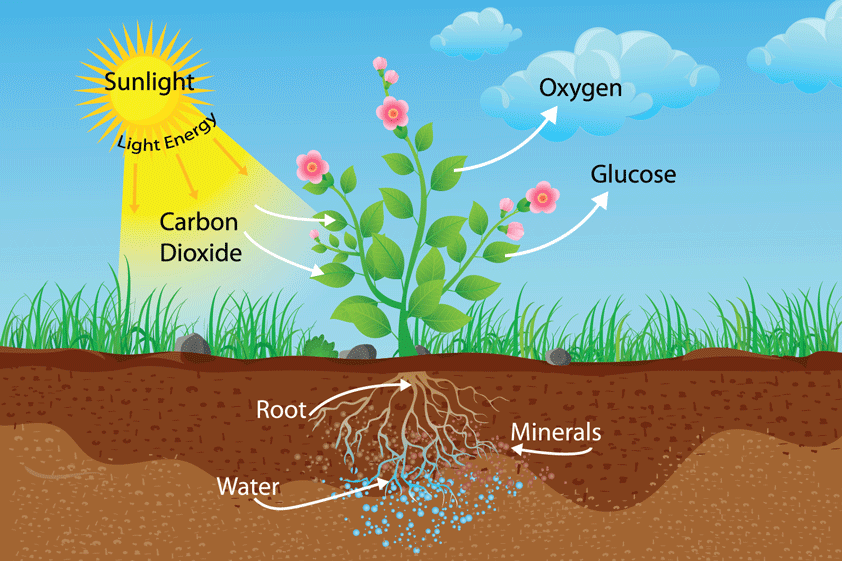Origin: a Latin derivative
meaning "Gift of the Earth."
Part 5: Plant Metabolism—Respiration

Once the plant has produced the molecules of sugar it needs for food, it must have a mechanism to use those sugars for energy. This process is called respiration and works by breaking down sugar molecules to harvest the energy needed to power plant processes. The respiration process can be summarized by the equation:
C6H12O6 (glucose) + O2 à CO2 + H2O
This equation shows that together with oxygen, glucose is broken down to produce both carbon dioxide and water. The energy released in this reaction is collected into ATP molecules.
Like photosynthesis, the summary of respiration seems simple, but it actually involves five separate and complex reactions.
- Glycolysis: First, the six-carbon glucose molecule is split into two three-carbon molecules of pyruvate. This step occurs in the cytoplasm of the cell
- Formation of Acetyl CoA: Next, each of the new pyruvate molecules is transformed into acetyl coenzyme A (acetyl CoA).
- Krebs Cycle: The acetyl CoA now makes its way into the Krebs cycle, a process requiring eight repeating steps. Each turn of the Krebs cycle produces many energy carrying molecules. Keep in mind that each molecule of glucose produces two molecules of acetyl CoA, which would in turn require two turns of the Krebs cycle. This step occurs in the mitochondria of the cell.
- Electron Transport Chain: The electron transport chain also occurs in the mitochondria of the cells and works by transferring energy from the breakdown of sugar into energy the cell can use. The purpose of the electron transport chain is to generate potential energy that will generate the power needed to drive the last step of respiration.
- ATP Synthase Complex: The ATP synthase complex is located within the inner membrane of the mitochondria. Inside of the ATP synthase complex is a channel that allows the potential energy in the electron transport chain to create energy, which is captured by ATP molecules. This step is responsible for generating the majority of the energy from the original glucose molecule.
Though a plant uses carbon dioxide and produces oxygen during photosynthesis then later uses oxygen and produces carbon dioxide again during respiration, overall a plant produces more oxygen and uses more carbon dioxide. This makes it possible for animals and humans to only use oxygen and produce carbon dioxide.





